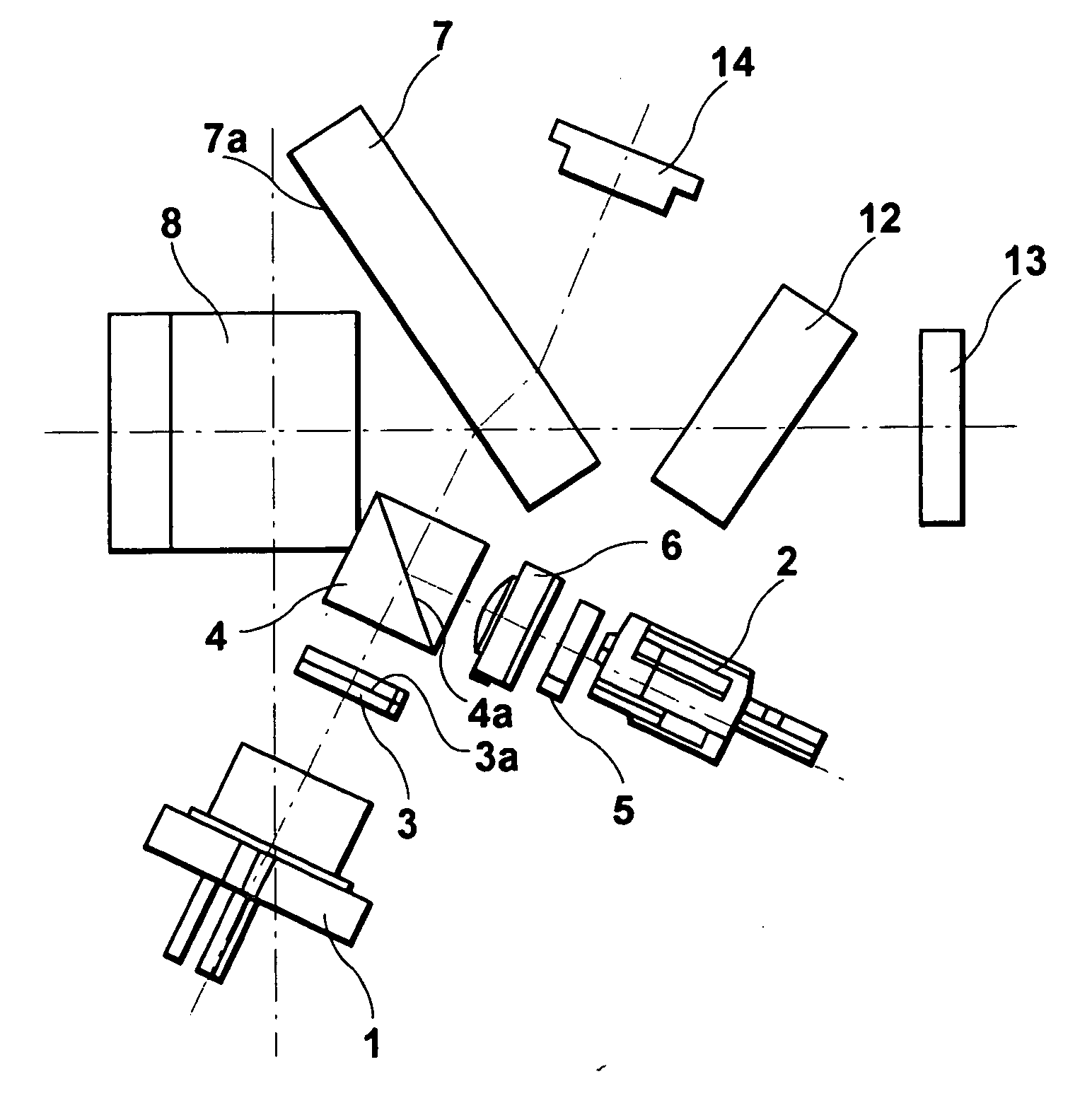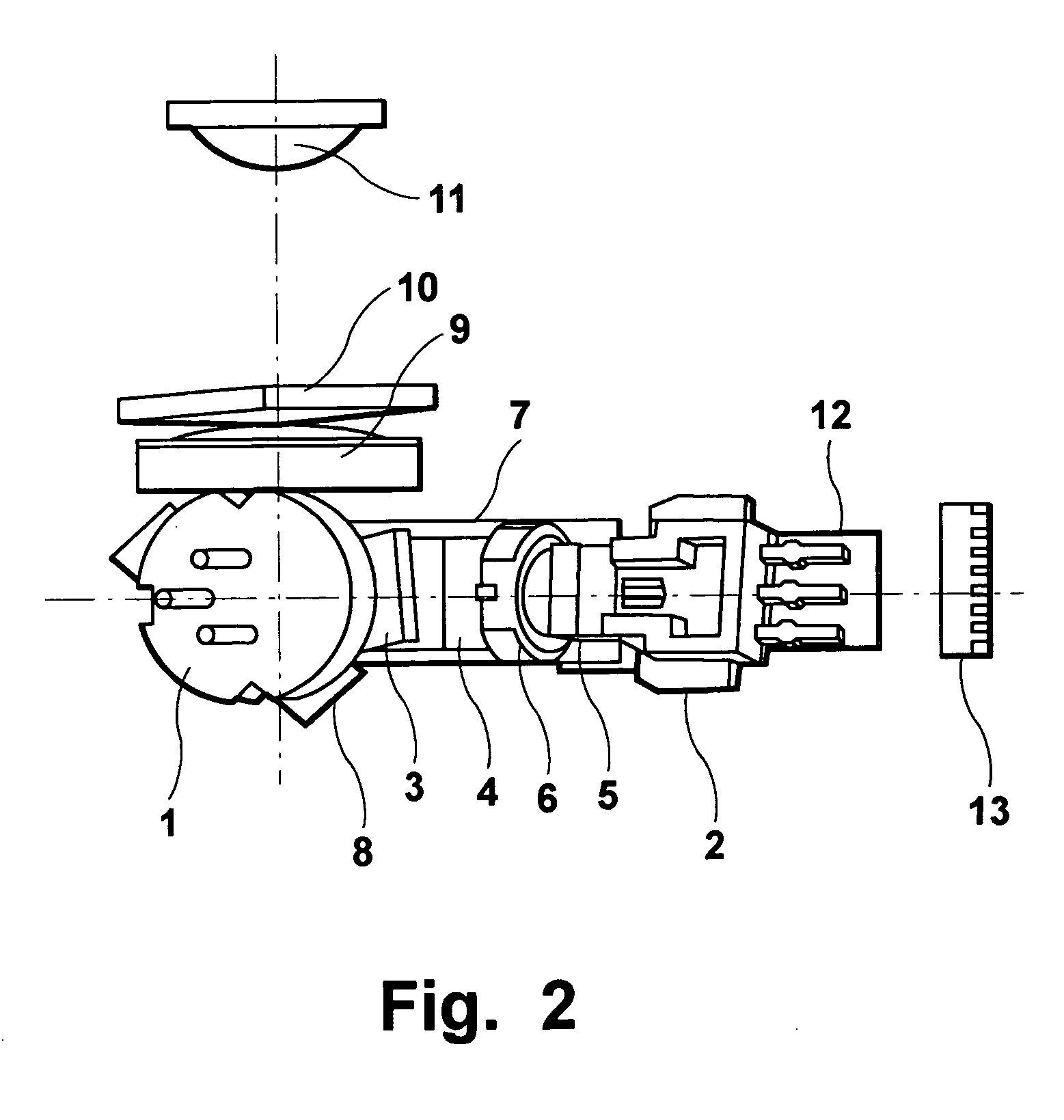Optical pickup device
a pickup device and optical technology, applied in the field of optical pickup devices, can solve the problems of inefficient laser light reflection on the splitting surface of p-, ineffective laser light for cd, and inability to efficiently perform laser light for p-, so as to improve the light use efficiency and improve the use efficiency of laser light. , the effect of avoiding the formation of film on the splitting surfa
- Summary
- Abstract
- Description
- Claims
- Application Information
AI Technical Summary
Benefits of technology
Problems solved by technology
Method used
Image
Examples
Embodiment Construction
[0029]FIGS. 1 and 2 are plan and side views of an optical arrangement employed in an examplary embodiment of an optical pickup device according to an aspect of the present invention. The optical pickup device shown in FIGS. 1 and 2 is configured to be capable of performing recording and reproduction using CDs as well as DVDs.
[0030] A first can-package type laser diode 1 serving as the first laser source emits laser light having a first wavelength within the range from 650-665 nm (e.g., 660 nm) which is in the red wavelength region and appropriate for performing DVD recording and reproduction. A second frame-package type laser diode 2 serving as the second laser source emits laser light having a second wavelength within the range from 775-795 nm (e.g., 785 nm) which is in the infrared wavelength region and appropriate for performing CD recording and reproduction. The first and the second laser diodes 1, 2 are selectively used in accordance with the disc type. It should be noted that...
PUM
| Property | Measurement | Unit |
|---|---|---|
| red wavelength | aaaaa | aaaaa |
| red wavelength | aaaaa | aaaaa |
| infrared wavelength | aaaaa | aaaaa |
Abstract
Description
Claims
Application Information
 Login to View More
Login to View More - R&D
- Intellectual Property
- Life Sciences
- Materials
- Tech Scout
- Unparalleled Data Quality
- Higher Quality Content
- 60% Fewer Hallucinations
Browse by: Latest US Patents, China's latest patents, Technical Efficacy Thesaurus, Application Domain, Technology Topic, Popular Technical Reports.
© 2025 PatSnap. All rights reserved.Legal|Privacy policy|Modern Slavery Act Transparency Statement|Sitemap|About US| Contact US: help@patsnap.com



